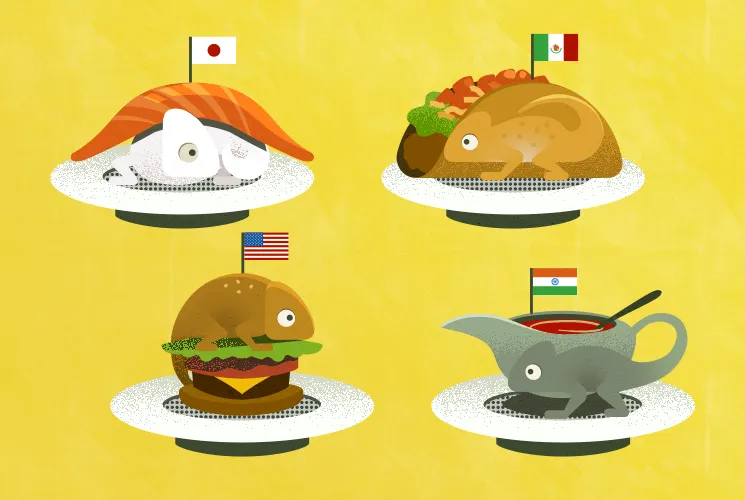The Power of Localisation: Insights from Global Case Studies

To enhance sales during a company’s international expansion, fostering strong relationships with local communities is crucial. Directly importing a distinctive language and culture, such as Japan’s, to a foreign country does not automatically ensure acceptance.
Localisation serves as a key tool to bridge these cultural gaps and connect with local users. It goes beyond mere translation, encompassing the development of tailored content and marketing approaches for each unique region.
This article presents a detailed overview of localisation, methodologies and specific examples of successful and non-successful case studies. We aim to provide you with a comprehensive grasp of the significance of localisation and the necessity of its implementation.
Going beyond translation to reach effective localisation
Localisation refers to the process of customizing software, websites, or business models to suit a particular region or culture. This involves not only translation but also cultural adaptations to make it suitable for local languages and customs. In simple terms, it fine-tunes content and business strategies for the local region, offering users information that is easily understandable and familiar to them.
Why is localisation necessary?
In a diverse world with various languages, ensuring clear communication demands more— it necessitates considering cultural nuances. Each region has its distinct cultural context, norms, and legal frameworks that require tailored adjustments for content to be relatable and acceptable.
Localisation not only ensures legal compliance but also fosters user trust and satisfaction. By adapting content to meet the specific needs and preferences of different locales, businesses can establish enduring relationships with their users, enhancing their overall experience.
In essence, localisation is a critical step toward providing a seamless and culturally sensitive user experience across various regions and cultures.
Specific Methods
Localisation involves several crucial steps. While language translation serves as a foundational element, a simple direct translation is often inadequate. Considering the cultural context and nuances of the target region is imperative.
In the realm of design, the selection of images and graphics that align with the local culture and aesthetics fosters a sense of connection with users. Incorporating region-specific information and events into the content can further strengthen the user’s engagement.
When displaying product prices, converting them into the local currency and units of measure is essential.By doing so, it promotes familiarity with the product and enhances the user’s inclination to make a purchase.
Above all, it is crucial to adhere to local laws and regulations. Paying attention to local compliance requirements, such as age restrictions and privacy protection rules, is crucial when offering products and services in a particular region.
Case Studies: Localisation to Japan
Japan, with the world’s third largest economy entices many companies to consider expanding into the country. However, due to cultural differences and other factors, venturing into Japan is not an easy task. A mere translation of services into Japanese does not guarantee success.
In this analysis, we examine two companies that have succeeded in the Japanese market, along with two that ended in failure, in order to understand the underlying factors behind their outcomes.
Localisation failures in Japan
Many large companies often attempt to enter the Japanese market but fail to flourish, primarily due to the legal disparities. Japan enforces distinctive legal regulations for each industry, making compliance with these imperative. This is why having a comprehensive understanding of the legal landscape is critical when contemplating localisation strategies for the Japanese market.
Uber, a ride-sharing service
During its entry into the Japanese market in 2014, the ride-sharing service Uber encountered significant obstacles. Its application for a business license was rejected due to non-compliance with Japanese regulations, as ride-sharing with strangers is prohibited in the country. Additionally, Uber’s lack of research on the local taxi and public transport ecosystem hindered its ability to tailor its service to the unique needs and culture of Japan. With an already established taxi network and robust public transportation, Japan presented a distinct challenge for Uber’s operations.
Airbnb, an accommodation service

The accommodation service Airbnb also faced challenges in Japan.
In Japan, certain legal standards must be met when offering houses as accommodation. However, Airbnb failed to find success in Japan due to insufficient efforts to properly meet this.
This case also shows that legal constraints and lack of adequate market research were the main reasons for failure.
Airbnb, the accommodation service, encountered several challenges during its operations in Japan. Japan has specific legal requirements for housing accommodations, which Airbnb failed to adhere, posing difficulties in gaining traction in the Japanese market. This case study serves as an illustrative example of how legal constraints and inadequate market research can be crucial factors contributing to failure.
Localisation Success in Japan
Despite the observed failures, numerous companies have successfully penetrated the Japanese market from abroad. These successful cases were achieved through thorough research of the local market and the implementation of appropriate adaptation strategies.
IKEA, large furniture manufacturer
IKEA, a leading furniture company with 445 shops in 30 countries, faced initial challenges when entering the Japanese market. They launched their first Japanese shop in 1974, but its products were not well received due to being too large for the Japanese lifestyle. Consequently, it withdrew from the market 12 years later.
However, learning from this setback, IKEA adopted a more targeted approach to the Japanese market a few years later. Through extensive consumer behavior research, it developed the ‘Japan Life’ design, offering small furniture tailored to Japanese consumers living in a variety of dwellings, from single-family homes to studio apartments.
The company’s success in the Japanese market can be attributed to its focus on safety and convenience, along with specific adjustments such as the introduction of a delivery system that includes furniture assembly.
STARBUCKS, a global coffee chain
STARBUCKS, a global coffee chain with 30,600 shops in 76 countries, made its first entry into Japan in 1996. Its exceptional success in the Japanese market is evidenced by its current standing as the fourth largest number of shops in the world.
During its entry into Japan, STARBUCKS conducted thorough market research and identified its target audience as ‘trendy non-smoking women in their 30s’. This strategic decision proved particularly effective as, at the time, 60% of men in Japan were smokers, creating an environment that facilitated STARBUCKS’ unique concept of non-smoking cafes.
To navigate cultural differences, STARBUCKS forged a partnership with Sotheby’s League, a well-established retail company. Furthermore, the company tailored its products to the Japanese market by adjusting cup sizes, introducing localised flavors, and customising social media content to resonate with local consumers.
Screenshot of STARBUCKS Japan Instagram post (@starbucks_j)
In terms of service design, Japan has implemented its own unique adaptations. For instance, while the ‘trenta size’ is the largest size in Europe and the USA, in Japan, the ‘venti size’ is considered the largest, with the ‘short size’ being sold as one size smaller. The taste, sweetness, and seasonal flavors of the products are also finely adjusted to suit the Japanese palate, with the product range reflecting local tastes and seasonal variations.
Moreover, the social media content is tailored to the local audience. In Japan, where Instagram and Twitter are used the most, the company emphasises content on these platforms to enhance communication with its customer base and boost brand recognition.
As mentioned earlier, it is evident that localisation entails more than just mere translation. Success in culturally diverse markets requires a multifaceted approach, encompassing comprehensive research, a deep understanding of the target audience, bridging cultural disparities, and optimising service design.
Case Studies: Japan to Global Localisation
Next, let’s examine several instances of localisation involving companies that have extended their reach from Japan to other countries. These examples encompass both successful and unsuccessful endeavours.
Unsuccessful Localisation Cases: Japan to Overseas
While adequate translation, thorough regional research, and adaptation to the local market are crucial for successful localisation, some cases result failure due to their nature of business, or inadequte preparation. Here are two examples of why this may happen.
LINE, an instant messaging app
LINE, a popular Japanese instant messaging application launched in 2011, has gained widespread usage in Japan. Users can exchange not only text messages but also stickers, photos, videos, and voice messages.
Despite its popularity in Japan, LINE has yet to amass a large user base outside the country. The primary reason for this can be attributed to insufficient competitive research and a failure to address local demands.
At the time of LINE’s entry into the market, other messaging apps such as WhatsApp, Facebook Messenger, and WeChat were already well-established in their respective countries. A robust marketing strategy aimed at distinguishing itself from these competitors was vital for attracting new app users.
While LINE boasted unique features like the ‘stamp function’, it lacked functions and content that catered to the specific needs of international users, hindering its global visibility. Currently, the company is using this experience as a learning opportunity, shifting its focus to the domestic gaming sector rather than pursuing further overseas expansion.
Successful Localisation Cases: Japan to Overseas
Below are some notable examples of major Japanese companies that successfully localised their products for overseas markets.
Nintendo, a video game company

Nintendo stands as a prime example of a successful global expansion from Japan, marking its international presence with the groundbreaking success of the arcade game ‘Donkey Kong’ in the 1980s. Since then, Nintendo has consistently tailored its strategy to suit the unique cultures and markets of various regions.
A key element contributing to Nintendo’s triumph is its focused approach to targeting specific regions. Games are developed and adapted to cater the preferences and demands of users in each location. Additionally, regional nuances, and cultural context is considered meticulously during the in-game text and dialogue translation process. This approach ensures that users can fully grasp the storyline and emotions, leading to a more immersive gaming experience.
Lastly, region-specific promotional strategies, including targeted advertising and events, have strengthened Nintendo’s communication with its user base, ultimately contributing to its widespread success.
Case Studies: Overseas Localisation
Here are some examples of foreign companies attempting to enter or expand into other countries. Let’s look at both unsuccessful and successful examples.
Unsuccessful Localisation Examples
Here are some examples of overseas companies attempting to enter or expand into other countries. Let’s examine both unsuccessful and successful instances.
McDonald’s Corporation, a global fast food chain
McDonald’s, headquartered in the USA faced challenges in expanding its presence in the Indian market due to a critical research oversight.
Understanding cultural and religious differences is vital in the localisation process. In the Indian market, the consumption of beef is avoided for religious reasons, leading to certain menu items from McDonald’s being rejected.
Thorough competitor research is also an essential step during localisation. In India, there are numerous fast-food chains with strong regional roots, resulting in fierce competition. Consequently, McDonald’s encountered difficulties in differentiating itself from its competitors and offering a menu customised to local tastes. Having a comprehensive analysis of the competitive landscape and tailored approach is crucial in such scenarios.
Successful Localisation Examples
The setbacks experienced during McDonald’s expansion in India highlight issues that could potentially arise for other restaurant chains. This prompts to Domino’s Pizza’s successful localisation study despite facing a religious obstacle.
Domino’s Pizza, fast food pizza chain
https://www.dominos.co.in/menu
Domino’s Pizza, another American company, conducted comprehensive research into lifestyle patterns and regional characteristics during its expansion into the Indian market. Recognising the significance of beef consumption restrictions due to religious and cultural reasons, the company prioritized the ‘VEG PIZZA’ menu option.
https://www.dominos.co.in/menu/non-veg-pizzas
Domino’s Pizza has successfully managed its expansion in the Indian market by developing a menu that respects local consumer needs and religious restrictions. In line with this, the only pizza containing meat is the chicken pizza, showcasing their commitment to appropriate menu development while honoring regional cultural norms and preferences.
These examples highlight the significance of understanding the local culture and religion for a successful expansion into India. It is clear that a localisation strategy based on regional characteristics is pivotal for triumph in international ventures.
Conclusion
Effective localisation is paramount for achieving success in diverse markets and cultures. This involves more than just language translation; it necessitates deeper adjustments.
In addition to design modifications, it is crucial to consider the country’s laws and regulations, culture, and consumer behaviour patterns. This ensures that the product or service aligns with the market, making it comprehensible, appealing, and credible to consumers.
Localisation serves as a crucial strategy for any company aiming to achieve successful international expansion.
Article: Alina Sai / Hisayoshi Kato
Design: Chihiro Murakami
CATEGORY LIST
-

Explore our diverse website/app designs and other production achievements.
-

Find articles that matter to you on COOSY BLOG!
Talk to Us, We Listen!
Click here for enquiries about websites and quotations.
Contact us





